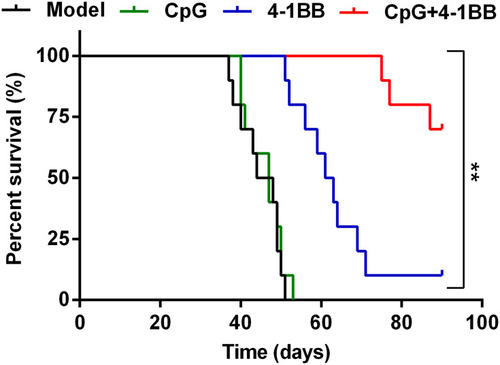Figures & data
Figure 1 CpG-ODN combined with the anti-4-1BB antibody significantly reduced mouse HCC tumor volume. The changes in the tumor volume of each mouse were monitored. (A) As shown in the figure, the tumors in the model group continued to grow, and the tumor growth rate of the CpG group and the 4-1BB group were slower than that of the model group. The tumors of the CpG+4-1BB group grew slowly after the start of treatment and began to shrink after the end of the three treatments. (B–D) As shown in the figure, the tumors of the model group and the CpG group continued to grow. Only a few tumors in the three untreated tumors showed a slower growth rate in the 4-1BB group, while the tumor growth of the CpG+4-1BB group was slowed. **Data results were analysed by repeated-measure analysis of variance; P< 0.001, n = 10 mice.
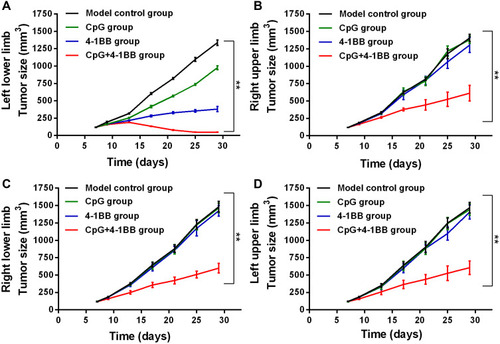
Figure 2 Immunotherapy did not cause significant damage to mouse organs. We calculated the organ coefficients of the heart, lungs, liver and kidneys in each group, and the results showed no significant differences (P> 0.05, n = 10 mice). This finding indicates that the mice did not have organ damage caused by immune-related side effects after treatment.
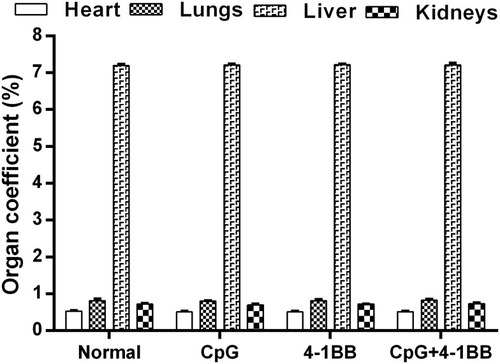
Figure 3 Immunotherapy increased serum IL-12 and IFN-γ concentrations in mice. The concentrations of these two cytokines in the mice treated with CpG-ODN were higher than those in the mice in the model group. The 4-1BB group was higher than the CpG group. Compared with those in the 4-1BB group, the concentrations of both cytokines in the CpG+4-1BB group were significantly increased. (A) Comparison of IL-12 concentration in peripheral blood of mice in each group. (B) Comparison of IFN-γ concentration in peripheral blood of mice in each group. **Data results were analysed by ANOVA; P< 0.001, n = 10 mice.

Figure 4 CpG-ODN combined with the anti-4-1BB antibody reduced the proportion of Tregs and increased the proportion of CD8+ T cells among mouse spleen lymphocytes. (A) The proportion of Tregs in the spleen lymphocyte population of the model group was higher than that of the normal group, which was the result of tumor growth. The proportions of Tregs in the spleen lymphocyte populations in the CpG and 4-1BB groups were lower than the proportion in the model group, which was the result of immunotherapy. The 4-1BB group was lower than the CpG group. The proportion of Tregs in the CpG+4-1BB group was lower than that in the CpG group and the 4-1BB group, which was the result of adding the anti-4-1BB antibody. (B) This figure shows the results for the proportion of CD8+ T cells in the spleen lymphocyte population. The model group had a lower proportion than the normal group. Both the CpG group and the 4-1BB group had higher proportions than higher than the model group and the 4-1BB group was higher than the CpG group. The proportion in the CpG+4-1BB group was higher than that in the CpG group and the 4-1BB group. **Data results were analysed by ANOVA; P< 0.001, n = 10 mice.
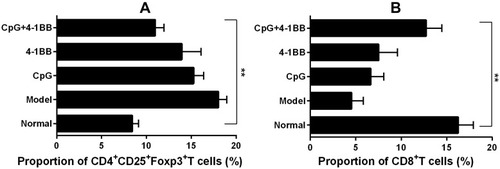
Figure 5 CTL killing activity was enhanced after treatment with CpG-ODN and the anti-4-1BB antibody. After CpG-ODN or anti-4-1BB antibody administration alone, the killing activity of CTLs harvested from the mouse spleen were enhanced. The increase in CTL killing activity was more pronounced after the addition of the anti-4-1BB antibody. In addition, killing activity increased as the proportion of target cells increased. **Data results were analysed by ANOVA; P< 0.001, n = 10 mice.
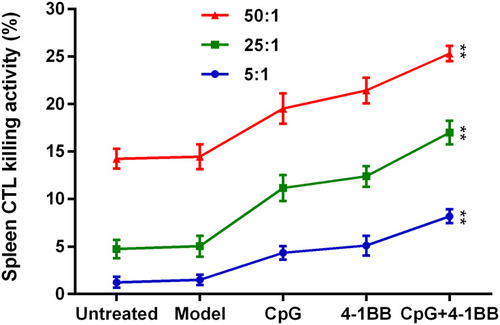
Figure 6 The survival of mice was significantly prolonged after treatment with CpG-ODN and anti-4-1BB antibodies. There was no significant difference in survival between the model group and the CpG group at 90 days after treatment. The survival time of mice in the 4-1BB group was slightly prolonged, but not significantly. The survival of mice was significantly prolonged after treatment with the anti-4-1BB antibody (n = 10 mice, **χ2 = 48.766, P< 0.001 using the Log rank test).
